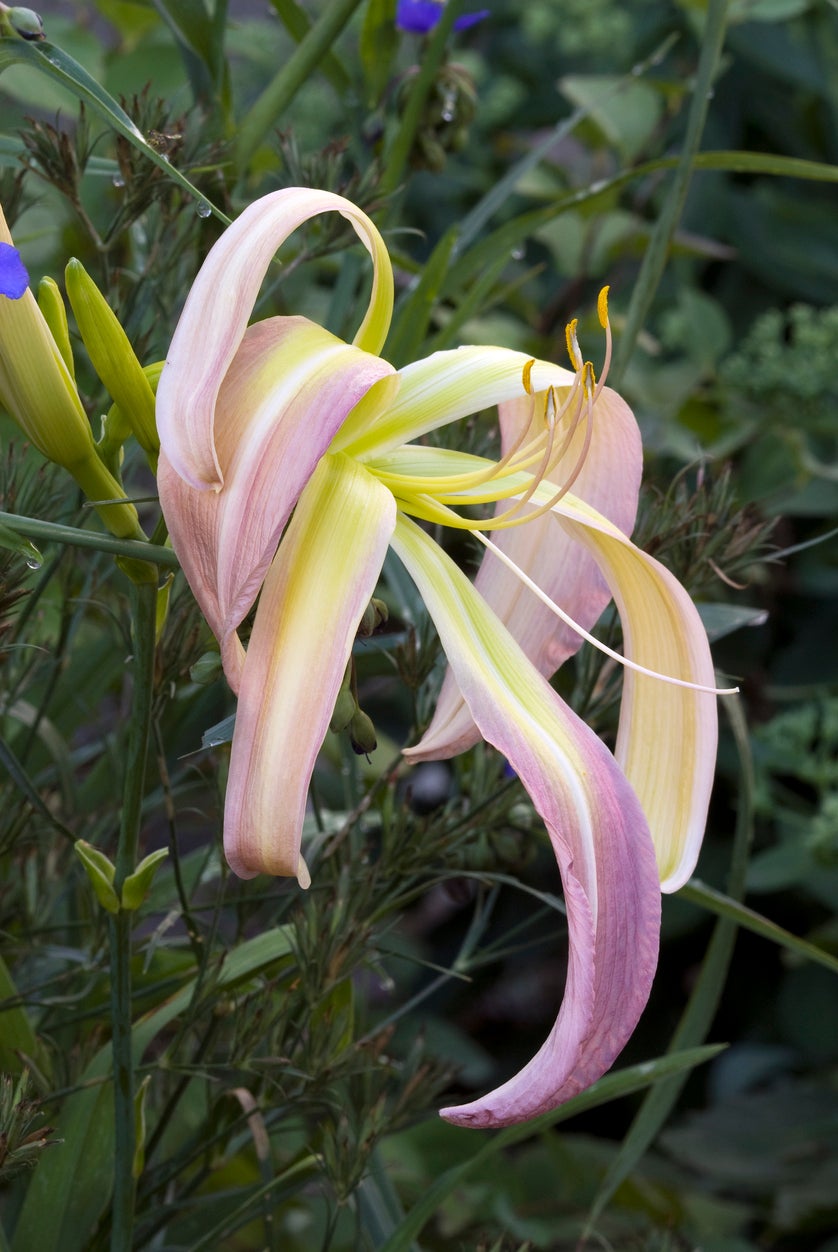Spider Daylily Plants: How To Care For Spider Daylilies


Daylilies are always popular with gardeners for a variety of reasons: season-long blooms, a variety of colors and shapes, and minimal care needs. If you are looking for a type of daylily that is a little unique, that maybe you haven’t seen before, try spider daylily plants with long, spindly, spider-like blooms.
What is a Spider Daylily?
Daylilies are perennial flowers that are highly dependable in the garden. They return year after year to provide pretty, colorful blooms. They tolerate a variety of conditions, including most types of soil and both sun and shade. Even if you mostly ignore your daylilies, they will likely thrive and produce day-long flowers for several weeks at a time.
There are many varieties of daylily, with variations in plant size, flower size and shape, and flower color. If you choose a good assortment, you can get constant daylily blooms from spring through early fall.
These flowers come in range of shapes as well as colors, and spider daylily flowers are unique. The petals are narrow and long, giving the bloom a spidery appearance. Adding to the effect, the petals curl under a little bit. To be technical, a spider daylily is any daylily flower with petals that are at least four times as long as they are wide.
How to Grow and Care for Spider Daylilies
As with other varieties of daylily, spider daylily growing is easy and mostly hands-off. Use any type of daylily in your perennial beds, as groundcover, and as borders. They prefer to have sun, but some shade won’t hurt these plants.
The soil is best when slightly acidic, fertile, and when it drains well but, again, daylilies aren’t particular and will grow in most any soil type.
Plant your spider daylilies in early spring or early fall and space them about 18 to 24 inches (46-61 cm.). Make sure the crown is no more than one inch (2.5 cm.) below the soil level.
Sign up for the Gardening Know How newsletter today and receive a free copy of our e-book "How to Grow Delicious Tomatoes".
It is important to water daylilies regularly until they get established, but after that watering isn’t needed as often. In fact, they will tolerate drought pretty well.
Maintain your plants over the years by trimming off dead leaves and spent blooms. Remove all the scapes at the end of the growing season. If flowering slows down or decreases, consider dividing clumps of your spider daylilies to revitalize them.

Mary Ellen Ellis has been gardening for over 20 years. With degrees in Chemistry and Biology, Mary Ellen's specialties are flowers, native plants, and herbs.